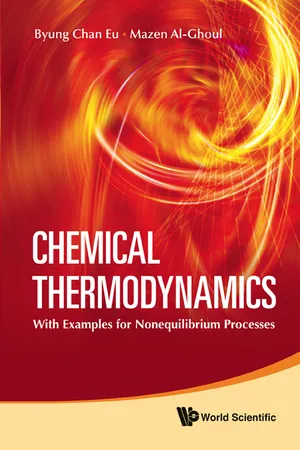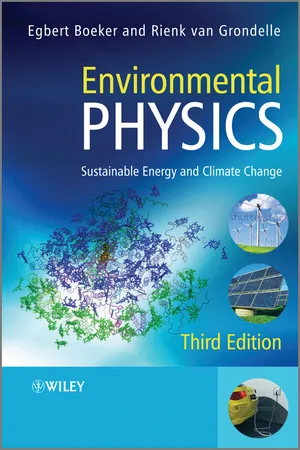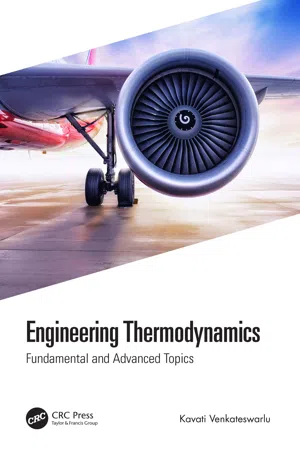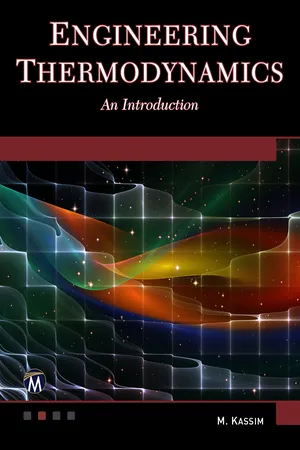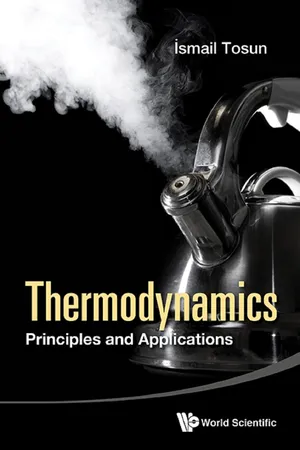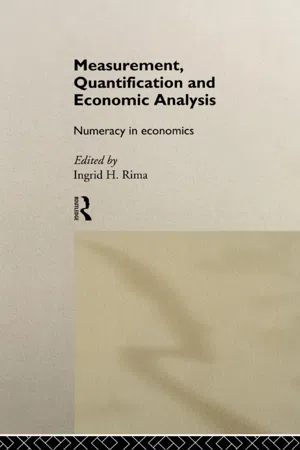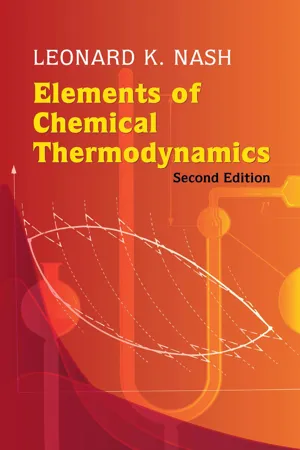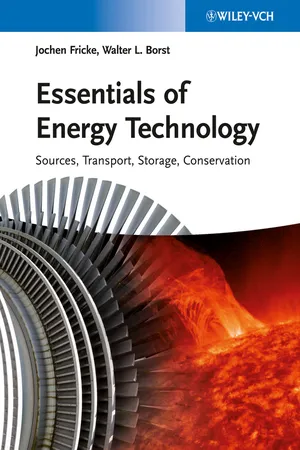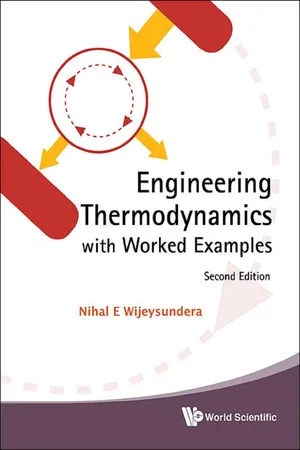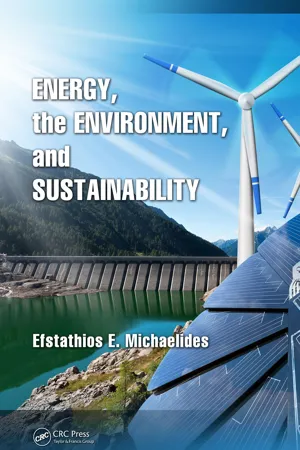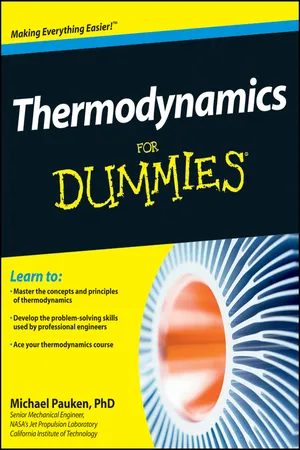Technology & Engineering
Carnot Cycle
The Carnot cycle is a theoretical thermodynamic cycle that represents the most efficient process possible for converting heat into work. It consists of four reversible processes: isothermal expansion, adiabatic expansion, isothermal compression, and adiabatic compression. The Carnot cycle serves as a benchmark for the maximum efficiency that any heat engine can achieve.
Written by Perlego with AI-assistance
Related key terms
12 Key excerpts on "Carnot Cycle"
- eBook - ePub
Chemical Thermodynamics
With Examples for Nonequilibrium Processes
- Byung Chan Eu, Mazen Al-Ghoul(Authors)
- 2010(Publication Date)
- WSPC(Publisher)
The temperatures in this expression is in the absolute temperature scale because of the ideal gas equation of state used for calculations involved. We emphasize that this efficiency formula is shown to be valid in the case of an ideal gas undergoing reversible processes. We will see in Sec. 4.4 that it holds in general for real substances, reinforcing the universality of the result as demanded by the Carnot theorem.4.2 Carnot's TheoremAs a result of the analysis made of the working of a Carnot Cycle as an idealization of real engines, Carnot obtained a theorem concerning the efficiency of reversible cycles and its relationship to the efficiency of irreversible cycles. This theorem is now known as Carnot's theorem.Carnot's theorem: The efficiency of reversible Carnot Cycles is independent of materials and modes of operation, and is maximum. It depends only on the temperatures of the heat reservoirs. In other words, if we denote the efficiencies of reversible cycles by nrev , n'rev , and so on, and that of an irreversible cycle by nirr then it may be stated that Moreover, nrev depends only on the temperatures 61 and 62 of the two heat reservoirs, hot and cold.Proof. In order to prove the first part of the theorem we first consider two reversible engines operating between two heat reservoirs at temperatures θ1 and θ2 (θ1 ≥ θ2 ). Engine En' takes heat Q'1 from the hotter reservoir and converts part of it into work W and emits heat Q' 2 to the colder reservoir. The other engine En takes heat Q1 ' from the hotter reservoir and converts part of it into work W and emits heat Q'2 to the colder reservoir. The two engines are now coupled such that engine En' is a prime mover and the other engine En is a refrigerator; see Fig. 4.4 . Engine En'mode by which the engin thus operates reversely to the mode by which the engine En1 operates, pumping heat Q'2 from the colder reservoir and returning heat Q1 to the hotter reservoir at the expense of work W. Now assume thatFig. 4.4 Coupling of a prime mover and a refrigerator as a device to prove Carnot's theorem. - eBook - ePub
Environmental Physics
Sustainable Energy and Climate Change
- Egbert Boeker, Rienk van Grondelle(Authors)
- 2011(Publication Date)
- Wiley(Publisher)
4.84 ) is too optimistic because of irreversible processes; in practice, the loss will be higher.4.3 Idealized CyclesIn Figure 4.8 four idealized ways were presented of converting heat into work and vice versa. In practice any engine will work in a cycle, where the initial and final states of the system are the same. In this section, four, still idealized, cycles are described where heat is converted into work and one cycle for refrigeration, where work is used to extract heat from a cold reservoir. In describing the cycles extensive use will be made of the thermodynamic functions p , V , S , T , H since that makes it easy to see what variables are kept constant during parts of the cycle.In the first two cycles to be discussed, the Carnot Cycle and the Stirling cycle, heat is reversibly transported from a high temperature reservoir to a low temperature one. This should result in the Carnot efficiency (4.62 ), which indeed is the case.It must be stressed that in a heat engine the source of heat does not matter. The heat may come from solar heating or from waste heat in a nuclear power station, or it may use the flame of the combustion of oil, gas, wood or coal. These combustion processes may be conducted with due precautions against pollution. Finally, the heat may be transported over some distance by means of heat pipes (Section 4.1.4).4.3.1 Carnot CycleThe cycle is sketched in Figure 4.9 ; because all changes occur reversibly, all parts of the cycle have definite thermodynamic variables and the cycle is indicated by drawn lines. For simplicity we take heats Q H and Q C as positive in the considerations below. For heat leaving the engine a minus sign is added, if required.Figure 4.9 Idealized Carnot Cycle with on the left its pV diagram and on the right its ST diagram. From the latter one observes that in parts 1 → 2 and 3 → 4 of the cycle the entropy is conserved, hence those parts are adiabatic; in part 2 → 3 heat QH is taken from the high-temperature reservoir while in part 4 → 1 heat QC - eBook - ePub
Engineering Thermodynamics
Fundamental and Advanced Topics
- Kavati Venkateswarlu(Author)
- 2020(Publication Date)
- CRC Press(Publisher)
It is the highest efficient cycle operating between the same temperature source and the same temperature sink. However, the Carnot Cycle cannot be a reality due to certain impracticalities associated with it. Figure 11.1 shows the Carnot Cycle on p-v and T-s diagrams. FIGURE 11.1 The Carnot Cycle. (a) p-v diagram and (b) T-s diagram. 11.3 Air-Standard Cycles—Assumptions The complete analysis of reciprocating internal combustion (IC) engines essentially requires the study of combustion process in the cylinder and heat transfer from the gases to the cylinder walls and work required to induct the charge into the cylinder and pump the exhaust gases out of the cylinder. The irreversibilities due to the friction and the heat transfer due to the temperature difference are also to be considered. The fuel and air after combustion change the phase as gas. Thus the analysis of gas cycles is a complex job, and a simplified model is the air-standard analysis with the following assumptions: Air, assumed as ideal gas, is the working fluid The combustion process is replaced by the reversible heat addition Compression and expansion processes are reversible and adiabatic Exhaust process of actual IC engine is replaced by constant volume heat rejection since the cycle is assumed to be a closed cycle In addition to the air-standard analysis, if the specific heats of the fluid are assumed to be constant at their ambient temperature values, then the analysis is termed the cold air-standard analysis. It is to be noted here that the air-standard analysis makes the study of internal combustion engines simpler and provides the means of analyzing the influence of various parameters on the performance of actual engines - eBook - ePub
Engineering Thermodynamics
An Introduction
- M. Kassim(Author)
- 2022(Publication Date)
- Mercury Learning and Information(Publisher)
Figure 6.1 shows a thermodynamic cycle that is considered to be a closed system. A thermodynamic cycle may not be a closed cycle. For instance, a jet engine repeatedly receives fresh ambient air and releases hot burnt gases to the atmosphere. The burnt gas is cooled down in the atmosphere to ambient temperature.FIGURE 6.1 Thermodynamic cycleThe concept of thermodynamic cycle, as shown in Figure 6.2 , can be explained as follows:FIGURE 6.2 The system’s cycle with the addition of heat.Consider a fluid contained in a piston− cylinder apparatus that undergoes heat interaction with two heat reservoirs at different temperatures. The fluid exercises the following four processes and regains its original state.1 − 2 : adiabatic compression to raise the temperature to high-temperature reservoir.2 − 3 : the fluid at the temperature of high-temperature reservoir is isothermally heated.3 − 4 : adiabatic expansion to the temperature of lower-temperature reservoir.4 − 1 : isothermal cooling of the gas to the initial pressure and the temperature.The cycle produced by these four processes is called the Carnot Cycle.6.3 PERFORMANCE PARAMETERSA few performance parameters of power cycles are explained below.Thermal effectiveness : it is the limit of the quantity of heat entering the engine which is converted to the work of the engine.(6.1)Ratio of back work : the ratio of the pump work (− W ) required to the turbine work (+ W ) produced.(6.2)Usually, ratio of back work is small indicating the pump work (− W ) required to the turbine work (+ W ) produced.Work ratio :(6.3)Specific steam consumption (SSC) : it is the amount of steam required to produce unit power. It is usually expressed as kg/kWh and has a numerical value from 3 to 5 kg/kWh.(6.4)6.4 CARNOT VAPOR POWER CYCLEThe Carnot Cycle consists of four reversible processes: isothermal addition of heat, isentropic expansion, isothermal discharge of heat, and isentropic compressor as shown in Figure 6.3 .FIGURE 6.3 Steady-flow Carnot engine.Carnot Cycle is a perfect cycle having maximum thermodynamic effectiveness. Carnot vapor cycle contains vapor as the working fluid. The T -S and P -V diagrams of a Carnot Cycle are plotted in Figure 6.4 - eBook - ePub
Thermodynamics
Principles and Applications
- İsmail Tosun(Author)
- 2015(Publication Date)
- WSPC(Publisher)
Fig. 5.1 The Carnot Cycle. • Adiabatic and reversible expansion of an ideal gas,• Isothermal and reversible compression of an ideal gas by discarding heat to a cold reservoir at TC (heat sink),• Adiabatic and reversible compression of an ideal gas to its initial state.These four processes are shown on a P-V diagram in Fig. 5.1. Considering the ideal gas in a frictionless piston-cylinder device as a system, the analysis of the Carnot Cycle is as follows:• Process 1 → 2 (Reversible isothermal expansion at TH )The first law of thermodynamics for a closed system is
The work done by the ideal gas is(5.1-1)
Thus, the amount of heat addition is(5.1-2) (5.1-3) Since P1 > P2 , < 0 and as expected.• Process 2 → 3 (Reversible adiabatic expansion)The first law of thermodynamics for a closed system is
Therefore, the work done by the ideal gas is(5.1-4) (5.1-5) Note that since as expected.• Process 3 → 4 (Reversible isothermal compression)The first law of thermodynamics for a closed system is
The work done on the ideal gas is(5.1-6)
Thus, the amount of heat removed from the system is(5.1-7) (5.1-8) Since and as expected.• Process 4 → 1 (Reversible adiabatic compression)The first law of thermodynamics for a closed system is
Therefore, the work done on the ideal gas is(5.1-9) (5.1-10) Note that since as expected.The net work output of the cycle is
The application of the first law of thermodynamics for the cycle leads to(5.1-11)
or(5.1-12) (5.1-13) Since Eq. (5.1-13) indicates that the work output of the cycle is always less than the heat added, i.e.,(5.1-14) The efficiency of the cycle, η, is defined as
Substitution of Eqs. (5.1-3) and (5.1-11) into Eq. (5.1-15) gives(5.1-15)
Since the processes 2 → 3 and 4 → 1 are reversible and adiabatic, then(5.1-16)
The use of Eq. (5.1-17) in Eq. (5.1-16) leads to(5.1-17)
Fig. 5.2 Alternative representation for the Carnot heat engine. Substitution of Eq. (5.1-13) into Eq. (5.1-15) also gives the efficiency as(5.1-18) - eBook - ePub
Measurement, Quantification and Economic Analysis
Numeracy in Economics
- Ingrid H. Rima(Author)
- 2002(Publication Date)
- Routledge(Publisher)
Unlike Edge worth’s utility-maximizing consumer, the Carnot engine does not come to equilibrium unless it runs out of fuel. It is not a closed system, but operates by importing heat energy and exporting mechanical energy— work. If the machine is not a closed system, neither are workers and capitalists. They are not at a position of equilibrium in real time, but are engaged in a daily cycle of expenditure of work and regeneration through rest and consumption that raises and lowers their utility in a repeating cycle. To understand human actions in this light, we first review the physics of the Carnot engine. Then we consider an individual in a similar closed path in real time over a utility field. We then extend the analysis to the labor and capital cycles in reversible and irreversible form.THE REVERSIBLE CARNOT ENGINE IN THE MECHANICAL PLANE
The Carnot engine was an idealized steam engine. Abstraction from the “historical” dissipative effects of friction, leakage and wear and tear made it reversible. It could be driven backward, so the parameters describing its state would recover their original values at the end of each cycle (Zemansky 1957; Truesdell 1980).4Gas (steam) is enclosed in a cylinder and held under pressure by a piston, which is coupled to a mechanical device such as the flywheel in Figure 16.1. Mechanical work is done as the injection of heat causes the gas to expand, driving the piston and the flywheel.5 Cooling the gas returns the piston to its original position, permitting the cycle to be repeated.The principles that make the engine work are the first and second laws of thermodynamics. The first law is the conservation of energy E. It is nothing but the statement that E is a state variable, a scalar function of temperature T, pressure P and volume V. A closed loop in these values implies zero net change in E over the cycle no matter how rapidly or long the machine has operated. The heat Q, and work W, transferred by the engine do not describe the state of the engine at an instant of time, but rather the flows of energy it imports and exports over time. Flows are not conserved, but depend on the path of the state parameters as the machine operates. The change in the state variable E is the algebraic sum of the flows of heat and work.6 Since the change in E is zero over the closed cycle, the flow of heat applied is equal and opposite to the work performed. The engine converts heat to work.7 - eBook - ePub
Elements of Chemical Thermodynamics
Second Edition
- Leonard K. Nash(Author)
- 2013(Publication Date)
- Dover Publications(Publisher)
all the changes produced by the cyclic function of the engine are localized in the surroundings with which it exchanges heat and work. To determine the efficiency with which the engine converts a heat input into a work output, we have then only to evaluate the changes it produces in its surroundings. This evaluation proves unexpectedly easy if we are intelligent in our choice of the particular closed cycle of changes we subject to analysis. We find nothing better than what is still known as the Carnot Cycle: a four-step alternating sequence of reversible adiabatic and isothermal changes, which is just about the simplest way of combining such changes in a closed cycle.One of the great virtues of the Carnot Cycle is its potential applicability to any working substance. But we begin by applying it only in the by-now familiar context of an ideal gas undergoing reversible isothermal and adiabatic changes. And at this point we temporarily modify our symbols. To facilitate expression of a series of inequalities, for the rest of this section we will use Q to symbolize |q |, the absolute value of the heat term; and W to symbolize |ω |, the absolute value of the work term. When the system gains heat or does work, we will write +Q or +W ; when the system loses heat or has work done on it, we will write -Q or —W . Thus the direction of each transfer of heat and work will be indicated unequivocally by an attached algebraic symbol.We take as our system a cylinder-piston device charged with ideal gas. By suitably pairing reversible adiabatic and reversible isothermal steps, we can link any given initial state of the system with any given final state. As noted also in Chapter 1, variation in the order of the steps yields the two distinct paths exhibited19 in Fig. 23 - eBook - ePub
Essentials of Energy Technology
Sources, Transport, Storage, Conservation
- Jochen Fricke, Walter L. Borst(Authors)
- 2013(Publication Date)
- Wiley-VCH(Publisher)
34 .Applying the first law of thermodynamics (conservation of energy), we know thatand we obtain3.23.3Problem 3.1
Derive Eq. (3.1 ) from the TS diagram in Figure 3.2 .Problem 3.2
Find out from suitable sources whether or not the Carnot Cycle was ever put to use.Problem 3.3
Calculate the Carnot efficiency for conversion of heat into work for a temperature Tc = 300 K of the cold reservoir and temperatures Th = 400, 600, 1200 K of the hot reservoir.3.2 Stirling Engine
Another important thermodynamic cycle was invented by the Reverend Dr. Robert Stirling. His engine was patented in 1816 and technically realized in 1818. It achieved efficiencies of about 18% in the nineteenth century. The pV and TS diagrams are shown in Figure 3.3 .The efficiency of the ideal Stirling process is identical to the Carnot efficiency:Figure 3.3Idealized Stirling cycle with two isothermal and two isochoric processes. The isothermal processes (3 → 4 and 1 → 2) are the same as in the Carnot process. The entropy changes from 4 → 1 and 2 → 3 are the same in magnitude and opposite in sign and cancel.3.4This follows from the identical isothermal expansion (3 → 4) and compression (1 → 2) routes for both cycles and the isochoric routes, which are adiabatic provided the displacement piston (Figure 3.4 ) is ideal. The piston has to store and transfer the thermal energy from the working fluid (gas) that is being shuttled between the warm and cold parts of the ideal engine with 100% efficiency. The thermal conductivity of the displacement piston or, more precisely, its thermal diffusivity should be high. Its flow resistance, however, must be small. A version of the so-called β-Stirling engine is shown in Figure 3.5 - eBook - ePub
- Nihal E Wijeysundera(Author)
- 2016(Publication Date)
- WSPC(Publisher)
Fig. 9.1 Carnot Cycle using a vapor For the process 4-1 in the evaporator:where is the steady mass flow rate of the working fluid.For the heat removal process 2-3: Applying the first law to the cycle, the net work output is The efficiency of the cycle 1-2-3-4 is given byManipulating Eqs. (9.1) to (9.4) we haveWe relate the enthalpy changes in Eq. (9.5) to entropy changes by integrating the general thermodynamic property relationNote that the above relation follows directly from the ‘T-ds ’ equation [Eq. (7.17) ] when we substitute for u from the relation, h = u + Pv .The pressure and temperature during the phase change processes 4-1 and 2-3 are constant. Therefore dP = 0 and T =Tsat, the saturation temperature. Integrating Eq. (9.6) and applying the resulting relationship to processes 4-1 and 2-3 we haveFrom the rectangular shape of the T-s diagram we see thatSubstituting in Eq. (9.5) from Eqs. (9.7) and (9.8) we obtain the familiar expression for the efficiency of the Carnot Cycle,There are several difficulties in constructing a real heat engine that operates on the Carnot Cycle using a vapor as the working fluid. The isothermal process 4-1 in the boiler could be approximated in practice because vaporization occurs at constant temperature. However, during the expansion 1-2 in the turbine, the vapor is wet and therefore could cause erosion of the blades of the turbine due to the impact of the liquid drops. In the case of the condensation process 2-3 it is difficult to control the final quality of the vapor at 3 where it enters the compressor. Moreover, practical problems are encountered in compressing the wet vapor during the process 3-4.When operating the Carnot Cycle in the vapor-liquid region, the maximum temperature of heat supply has to be below the critical temperature of the working fluid. This in turn limits the achievable cycle efficiency, which is a function of the heat supply temperature as seen from Eq. (9.9) - eBook - ePub
- Efstathios E. Michaelides(Author)
- 2018(Publication Date)
- CRC Press(Publisher)
the waste heat . The waste heat is at low temperature; it is of very low “quality,” and is impossible to use for the production of more power. It is really wasted!Figure 1.6 The net mechanical work produced by the cyclic engine, which receives heat from one reservoir and rejects heat to a second reservoir, is equal to the net heat received.The consequence of the second law of thermodynamics for energy conversion engines is that even though heat may be readily converted to work or power, it is only a fraction of the heat that is actually converted to work in all the cyclic thermal engines. This fraction is equal to the thermal efficiency the engine and is defined as the ratio of the net mechanical work produced W net , and the heat input, to the cycle Q H :η =1.8.W netQ H1.8The second law and the entropy increase principle dictate that the thermal efficiency of any cyclic engine is less than the Carnot efficiency η C , which is defined as1.9η C= 1 −and η ≤T LT Hη Cor≤ 1 −W netQ in.T LT H1.9The last equations are fundamental consequences of the second law of thermodynamics with a significant implication for the heat engines: no cyclic heat engine may be developed that would convert the entire quantity of the available heat into mechanical work. A significant fraction of the available heat Q H must be always rejected, and the work produced W net is limited by Equation 1.9 . This is often referred to as the Carnot limitation of the heat engines.The temperatures in the last equation are absolute temperatures, measured in kelvins (K) in the SI or degrees Rankine (°R) in the British system of units. Table 1.3 gives the conversion from commonly used temperatures scales to absolute scales. It must also be noted that as with Equation 1.6 , Equations 1.8 and 1.9 - eBook - ePub
- Mike Pauken(Author)
- 2011(Publication Date)
- For Dummies(Publisher)
If you can come up with a new kind of engine, you may get it named after yourself and be famous one day. The Otto cycle is an idealized model of a spark-ignition engine, where the combustion and exhaust processes are modeled as heat transfer processes connected to thermal energy reservoirs. The Otto cycle is a closed system because mass neither enters nor leaves the cycle during the heat transfer or work processes. When you analyze the Otto cycle with the first law of thermodynamics, you find the amount of heat transferred into and out of the air during the cycle and the amount of work put into and produced by the air during the cycle. Ultimately, the analysis leads to finding out how efficient an engine is at converting energy from the fuel into moving the car. The following sections give you a detailed overview of how you can analyze the cycle using the first law of thermodynamics and then determine its efficiency and irreversibility using the second law of thermodynamics. Analyzing the Otto cycle You can analyze an Otto cycle with the first law of thermodynamics using either of two methods in this section to determine the amount of work and heat transfer that occurs in each process. The constant specific heat method: For this method, you assume the specific heat of air remains constant in each process in the cycle. The analysis isn’t as exact as the variable specific heat method, but you don’t need to look up thermodynamic properties in a table. The variable specific heat method. This method takes into consideration that specific heat changes with temperature and uses values from Table A-1 in the appendix. This method is more accurate but finding the values can require a bit of tedious interpolation of the tables - eBook - ePub
Lord Kelvin
An account of his scientific life and work
- Andrew Gray(Author)
- 2012(Publication Date)
- Perlego(Publisher)
by a cyclical process, which leaves the working substance as it was, work is done at the expense of heat taken from the refrigerator, which Thomson's postulate affirms to be impossible. Therefore the assumption that an engine more efficient than the reversible engine exists must be abandoned; and we have the conclusion that all reversible engines are equally efficient.Thomson acknowledged in his paper the priority of Clausius in his proof of this proposition, but stated that this demonstration had occurred to him before he was aware that Clausius had dealt with the matter. He now cited, as examples of the First Law of Thermodynamics, the results of Joule's experiments regarding the heat produced in the circuits of magneto-electric machines, and the fact that when an electric current produced by a thermal agency or by a battery drives a motor, the heat evolved in the circuit by the passage of the current is lessened by the equivalent of the work done on the motor.Fig. 12. Fig. 12.In the Carnot Cycle, the first operation is an isothermal expansion (AB in Fig. 12 ), in which the substance increases in volume by dv, and takes in from the source heat of amount Mdv. The second operation is an adiabatic expansion, BC, in which the volume is further increased and the temperature sinks by dt to the temperature of the refrigerator. The third operation is an isothermal compression, CD, until the volume and pressure are such that an adiabatic compression DA will just bring the substance back to the original state. If ∂p ⁄ ∂t be the rate of increase of pressure with temperature when the volume is constant, the step of pressure from one isothermal to the other is ∂p ⁄ ∂t . dt; and thus the area of the closed cycle in the diagram which measures the external work done in the succession of changes is ∂p ⁄ ∂t . dtdv. Now, by the second law, the work done must be a certain fraction of the work-equivalent of the heat, Mdv, taken in from the source. This fraction is independent of the nature of the working substance, but varies with the temperature, and is therefore a function of the temperature. Its ratio to the difference of temperature dt between source and refrigerator was called "Carnot's function," and the determination of this function by experiment was at first perhaps the most important problem of thermodynamics. Denoting it by μ
Index pages curate the most relevant extracts from our library of academic textbooks. They’ve been created using an in-house natural language model (NLM), each adding context and meaning to key research topics.
